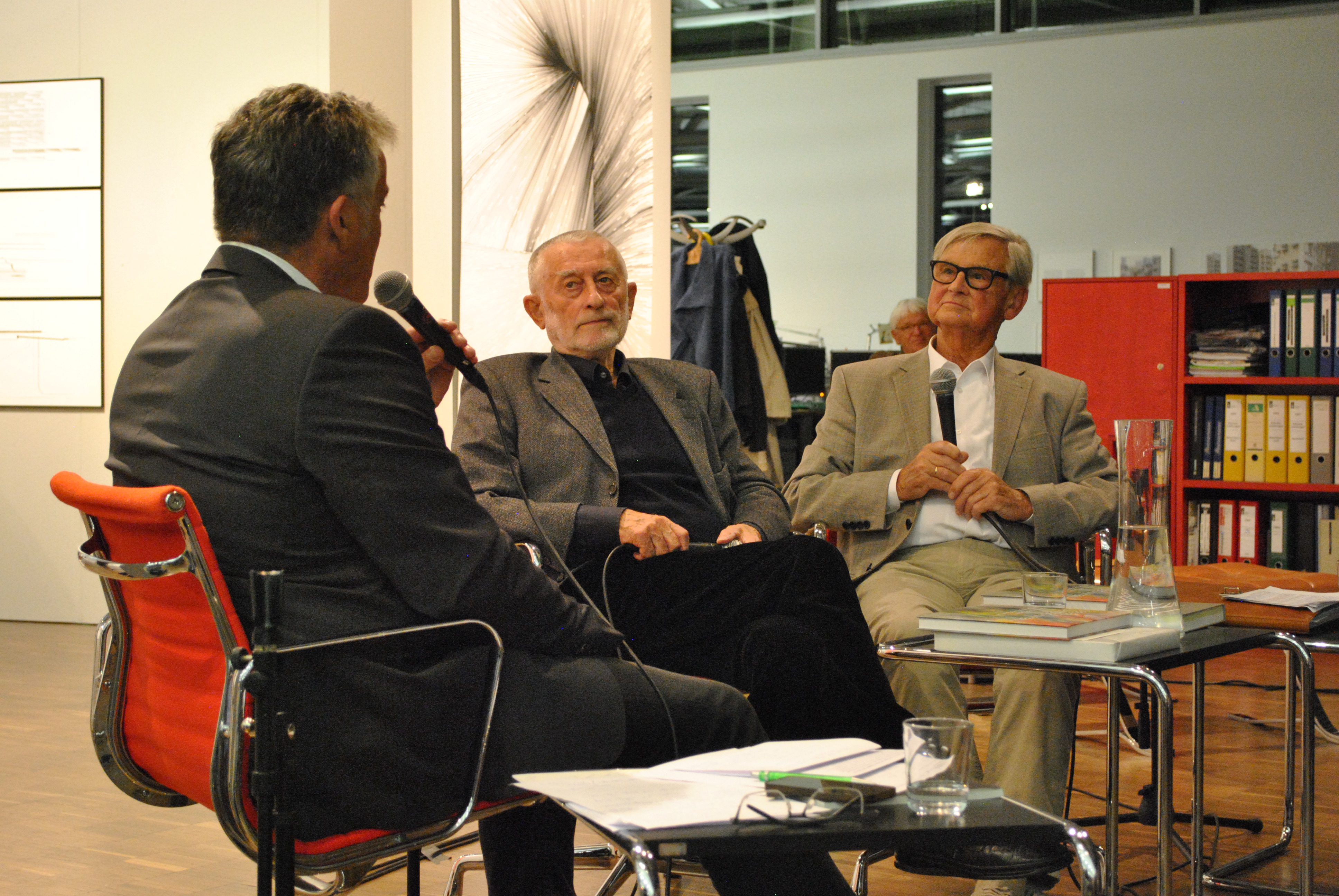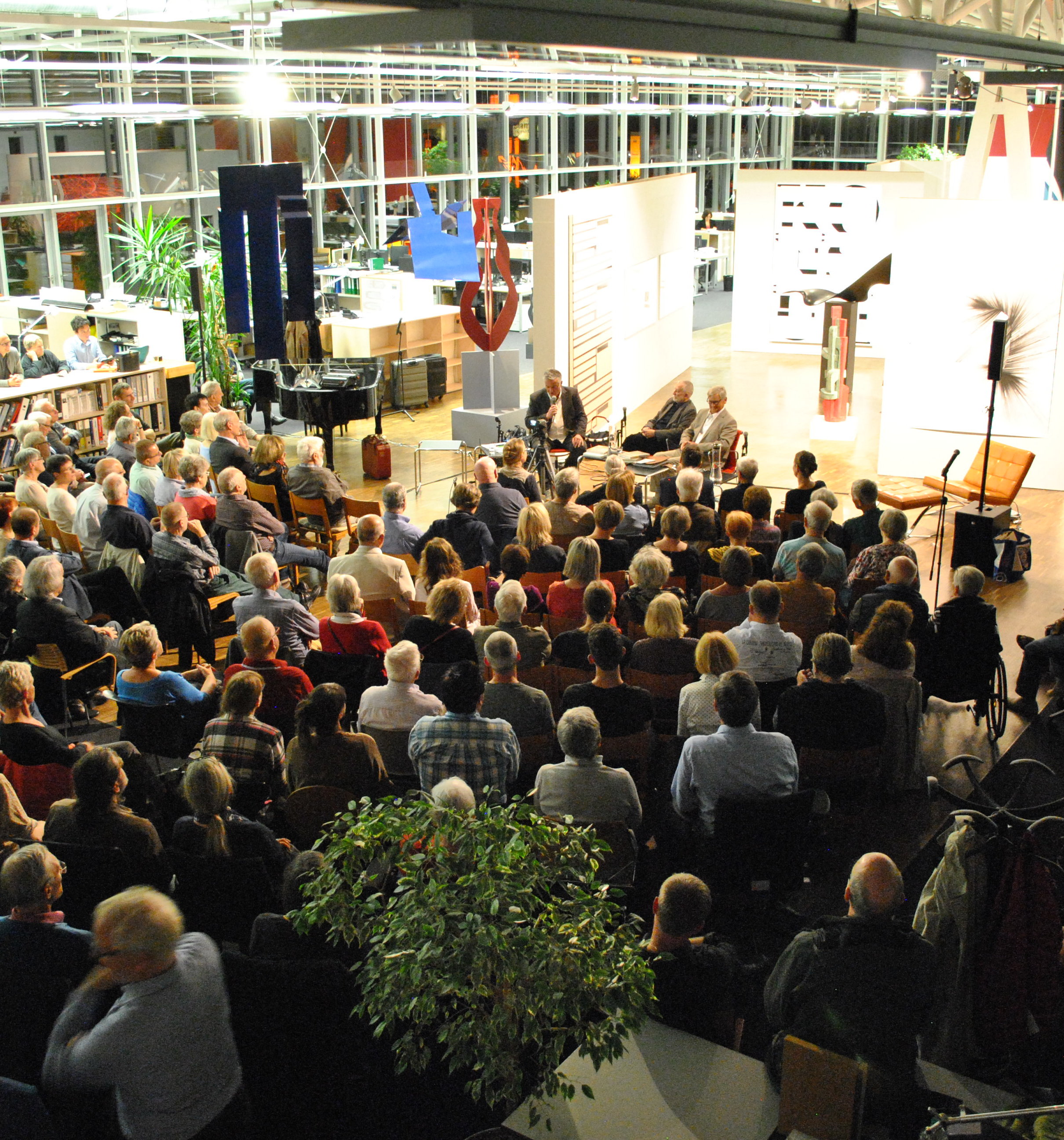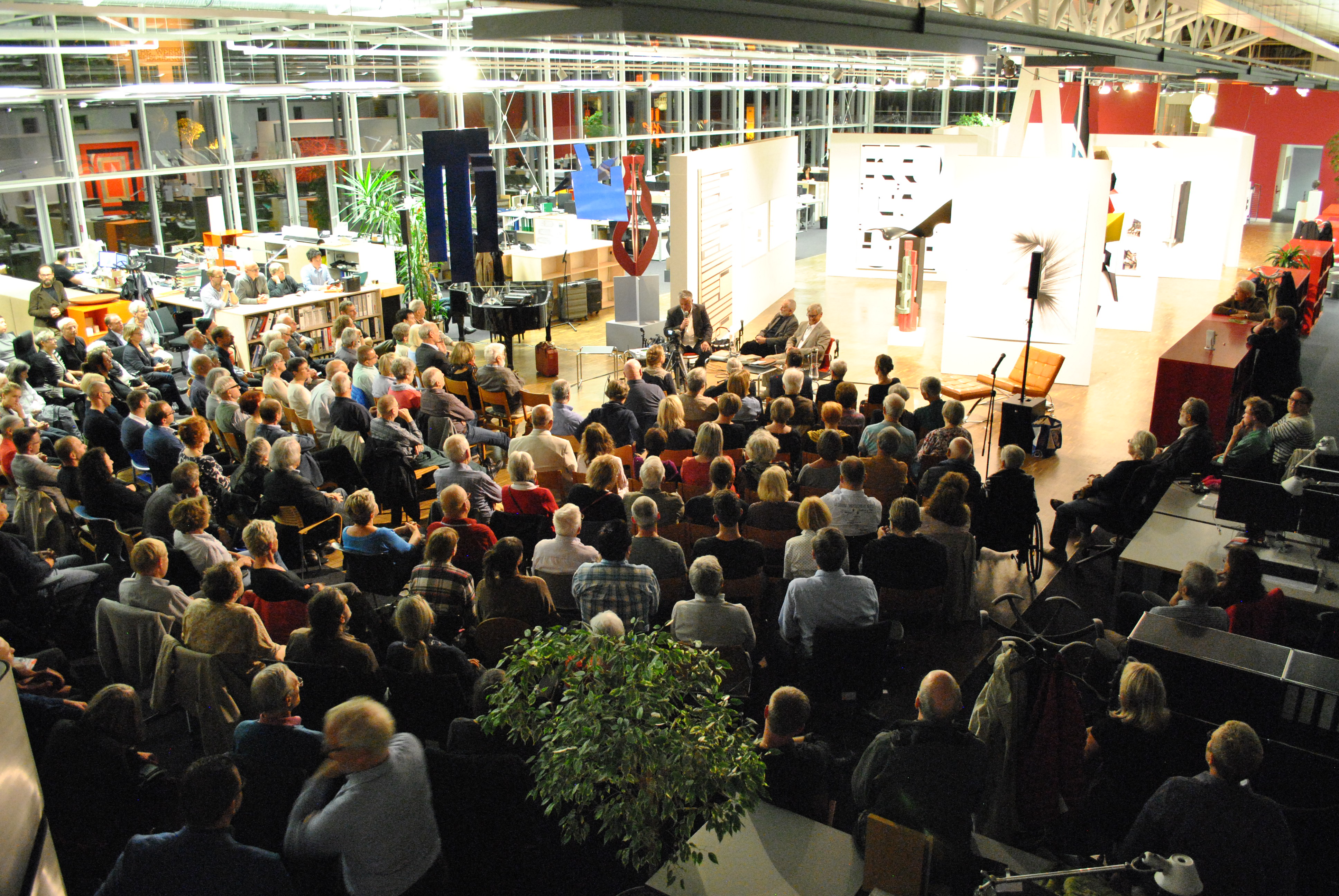Modernism in the East: R.Horn and K.C.Dietel
Modernism in the East: The designers Rudolf Horn and Karl Clauss Dietel gave insight into their lives’ work
Rudolf Horn and Karl Clauss Dietel had a decisive influence on the lives of many GDR citizens. Horn's MDW wall unit (produced by the Deutsche Werkstätten Hellerau) stood in many living rooms, his free-swinging armchair is considered a classic. Dietel, on the other hand, became famous with the designs for the car 'Wartburg 353' and the 'Simson S50' motorbike.

The two men reported on their lives and work at an event at Deutsche Werkstätten (in cooperation with the Kunstgewerbemuseum Pillnitz) in Hellerau on 25 September. MDR presenter Thomas Bille interviewed the two of them, in front of an audience of around 250, not only about their greatest designs, but also about the influence the living conditions in the GDR had on their work.
There are now new editions which are exclusively distributed by the Deutsche Werkstätten. In addition to the free-swinging armchair and footstool, as of now there is also a two-seater and a dynamic lounger. The furniture can be seen and tested at Deutsche Werkstätten in Hellerau and at the showrooms in Leipzig and Berlin.
There are now new editions which are exclusively distributed by the Deutsche Werkstätten. In addition to the free-swinging armchair and footstool, as of now there is also a two-seater and a dynamic lounger. The furniture can be seen and tested at Deutsche Werkstätten in Hellerau and at the showrooms in Leipzig and Berlin.


During the event, Karl Clauss Dietel, born in 1934, gave an insight into how he was active and creative, especially in the automotive industry. And he confessed: He was particularly influenced by the sight of US jeeps during the liberation after the Second World War.
This car was so "clearly structured", he still enthuses today. Such thoughts accompanied him in his designs for the proposed successor models for the famous GDR 'Trabant' car, even if many were rejected by the GDR government. His maxim in vehicle construction nevertheless remained the "five Ls": a car should be langlebig (long-lasting), leise (low noise), lütt (little), leicht (light) and lebensfreundlich ('life-friendly'). Dietel and Horn also agree on an important point, which was clearly brought home to the listeners that evening: it was not the lack that led to the solutions for furniture and products developed by the designers, but reason. Although, as a matter of principle, things were used sparingly, "The restrictions were mostly temporary. It simply took longer," says Dietel.